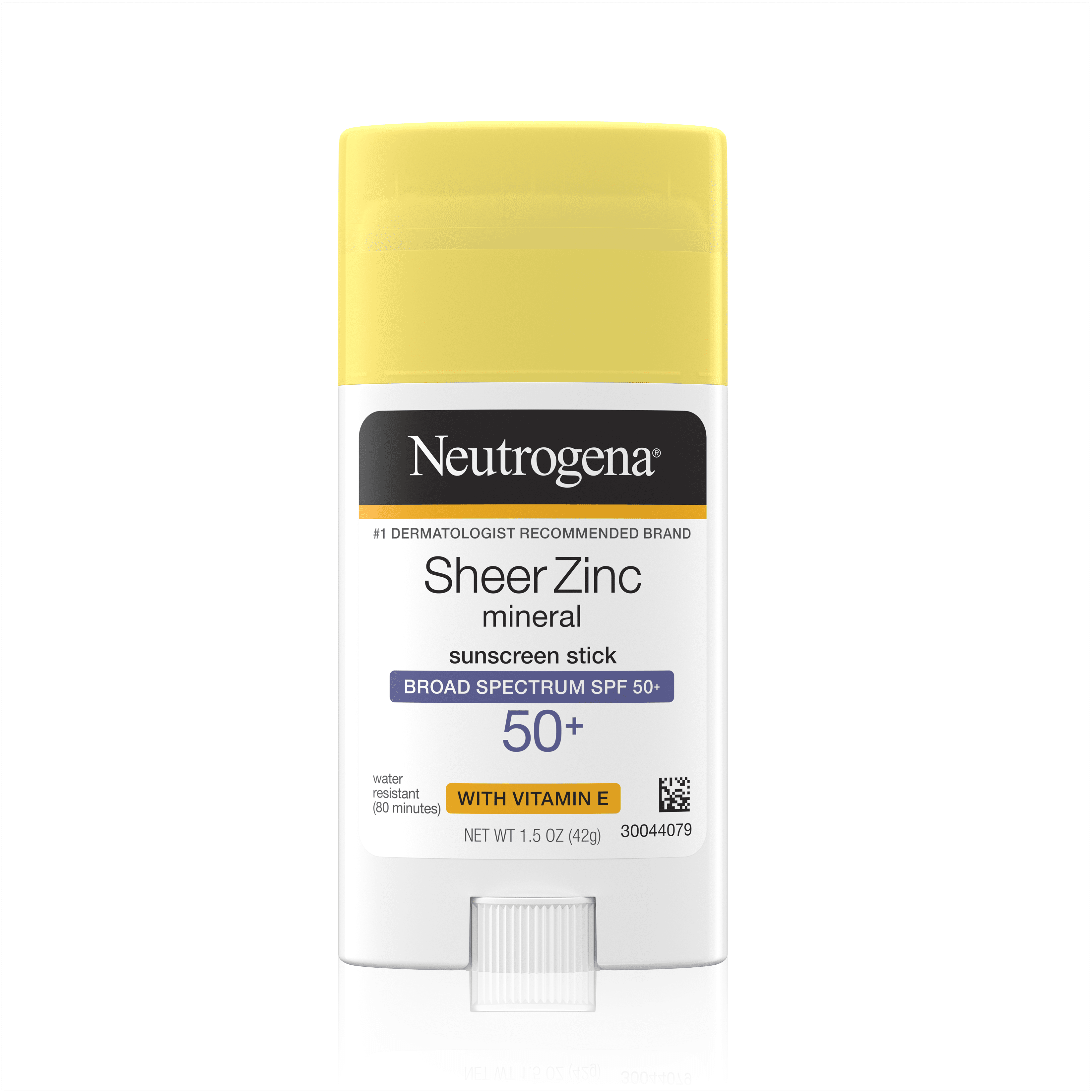

Some common ones in sunscreen sticks include shea butter, beeswax, and cocoa butter.
#ZINC OXIDE SUNSCREEN STICK SKIN#
Pore-clogging ingredients: For those with sensitive skin, it is important to look out for acne-triggering ingredients in sunscreen sticks since the formulas often contain oily ingredients that don’t absorb into the skin very well. Our best overall pick, the Elta Md UV Stick has an SPF of 50, and protects from both UVB and UVA rays. Broad spectrum SPF coverage is the term used to describe a sunscreen’s ability to safeguard the skin from both UVB and UVA rays, so make sure to use a sunscreen that does both for optimal protection. SPF protects the skin from UVB rays emitted by the sun, and the higher the number, the longer the protection from the sun. “A sunscreen stick should contain an SPF 30 at a minimum,” says Dr. What to Look for in a Sunscreen Stick SPF Level and Broad Spectrum Coverage She counts sunscreen as one of the most important skin staples, and is a proponent of stick forms for their ease of use and reapplication. is a New York City-based board-certified dermatologist who specializes in cosmetic and medical dermatology. SPF: 50 | Active Type: Chemical | Water Resistant: Yes | Cruelty Free: NoĬarmen Castilla, M.D.

So, as Castilla notes, make sure to wear this one strictly on pool days or simply out and about rather than in the ocean. Plus, it’s non-comedogenic, so it’s ideal for those with acne-prone skin.Ĭhemical-based sunscreens are often powered by reef-damaging ingredients and although Shiseido excludes major perpetrators oxybenzone and octinoxate, making the formula Hawaii-compliant, it still contains others like homosalate and octocrylene which are believed to damage aquatic organisms. And Shiseido’s Clear Sunscreen Stick does just that– it provides the face with a layer of near-invisible coverage.ĭesigned with a signature Heatforce and Wetforce technology that intensifies the effectiveness of sun protection when met with heat and water, Shiseido’s Clear Sunscreen stick can handle the sweatiest of faces.
#ZINC OXIDE SUNSCREEN STICK FREE#
Many sun-goers tend to opt for a chemical sunscreen due to its ability to easily absorb into the skin, free of any white cast. Maybe you'll be more likely to use (and reapply) sunscreen if you love these formulas as much as we do.Contains reef-damaging ingredients, so don’t swim in the ocean with it If we haven't proven our point just yet, perhaps these Korean sunscreen picks from K-beauty experts, dermatologists, as well as Allure editors in New York City and Seoul will. They defend your skin from the long-term effects of the sun.

Korean sunscreens, on the other hand, are part of a lifestyle. Ko Lamm points out that Western sunscreens are formulated as a necessity by focusing on the immediate effects of the sun. To take this measurement system one step further, Dr. She equates PA+++ to SPF 30 and recommends seeking out sunscreens with a minimum of each. While SPF focuses on UVB light ( which burns skin) and measures how protected you are from sunburn, PA is all about UVA light (which visibly ages us) and your protection from developing pigmentation, says Zion Ko Lamm, MD, a Charlotte-based internal medicine doctor who combines Korean skin care with wellness. You'll notice PA next to SPF in many of the product names below. So when you slather them on, you're not only protecting your skin from UVA and UVB rays, but you're also adding an extra layer of hydrating, brightening, and smoothing benefits. Plus, both feature ingredients found in your favorite serums and moisturizers, like Centella asiatica (known as cica for short), allantoin, ceramides, hyaluronic acid, and niacinamide to name just a few. Korean sunscreens of the chemical variety tout an equally transparent, grease-free finish.

Their mineral sunscreens, no matter how much zinc oxide they contain, are completely transparent on all skin tones without the telltale, annoying thickness. In South Korea, sunscreen formulas are advancing rapidly due to quicker approval times. since 1999," according to cosmetic chemist Stephen Ko. In fact, "there hasn't been a new approved for use in sunscreens in the U.S. Because sunscreen is considered a drug according to the Food and Drug Administration (FDA) and its chemicals and components must undergo formal drug approval processes, stateside beauty brands are limited by what they can spike their formulas with. We've said it once, and we'll say it again: Korean sunscreen is just better than Western sunscreen.


 0 kommentar(er)
0 kommentar(er)
